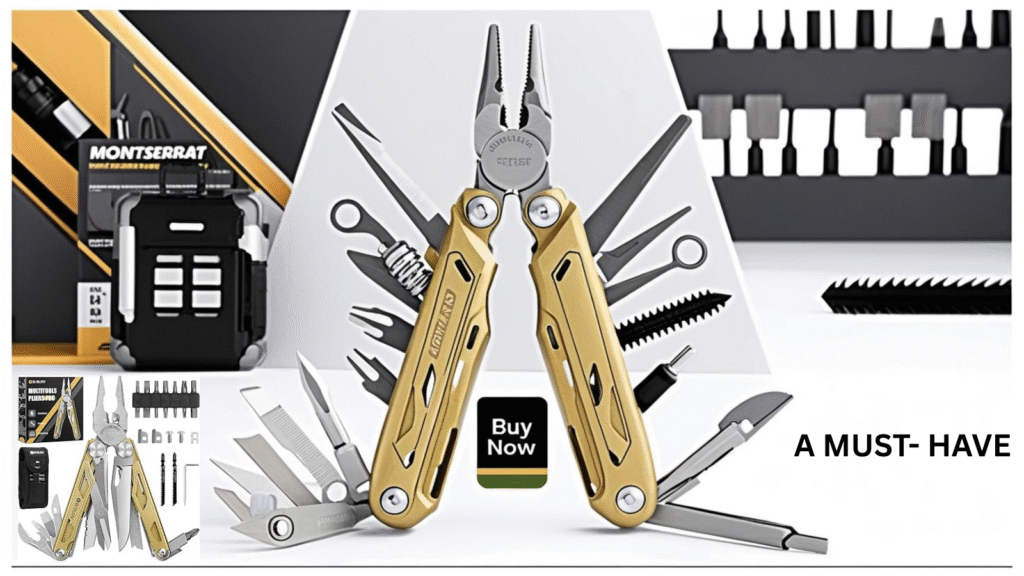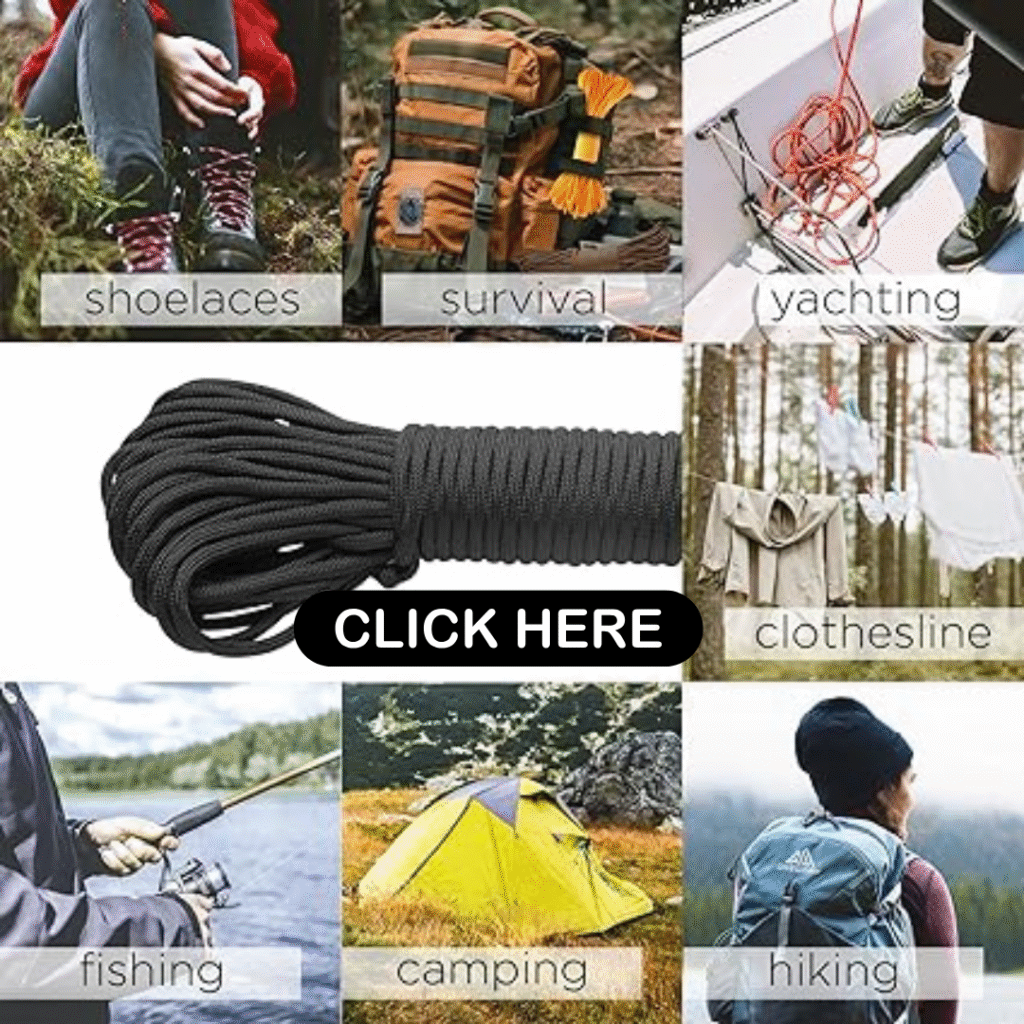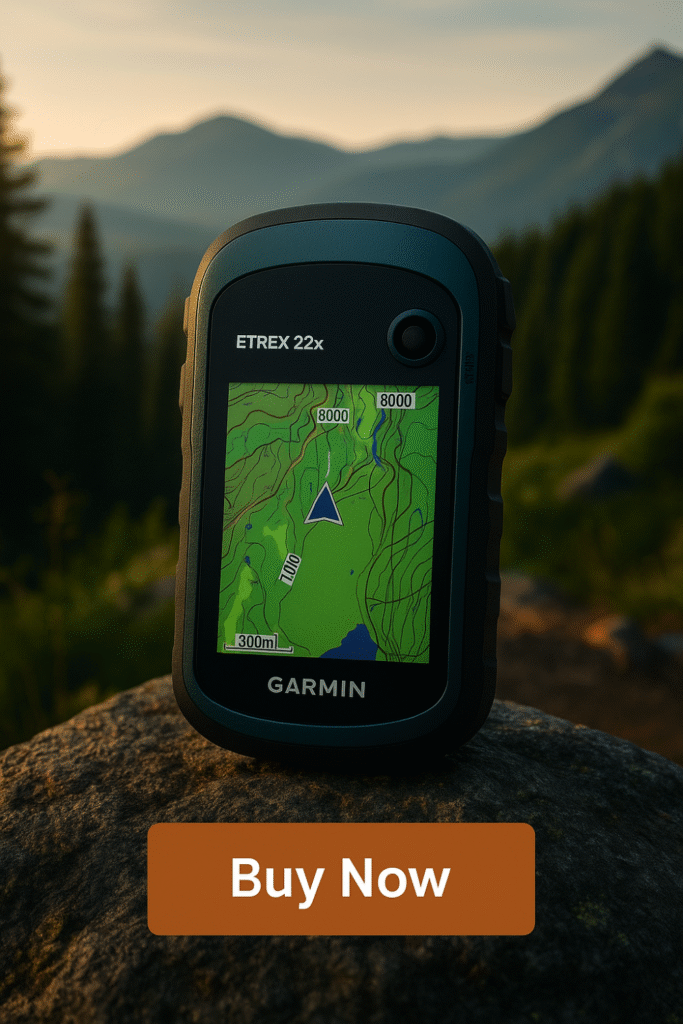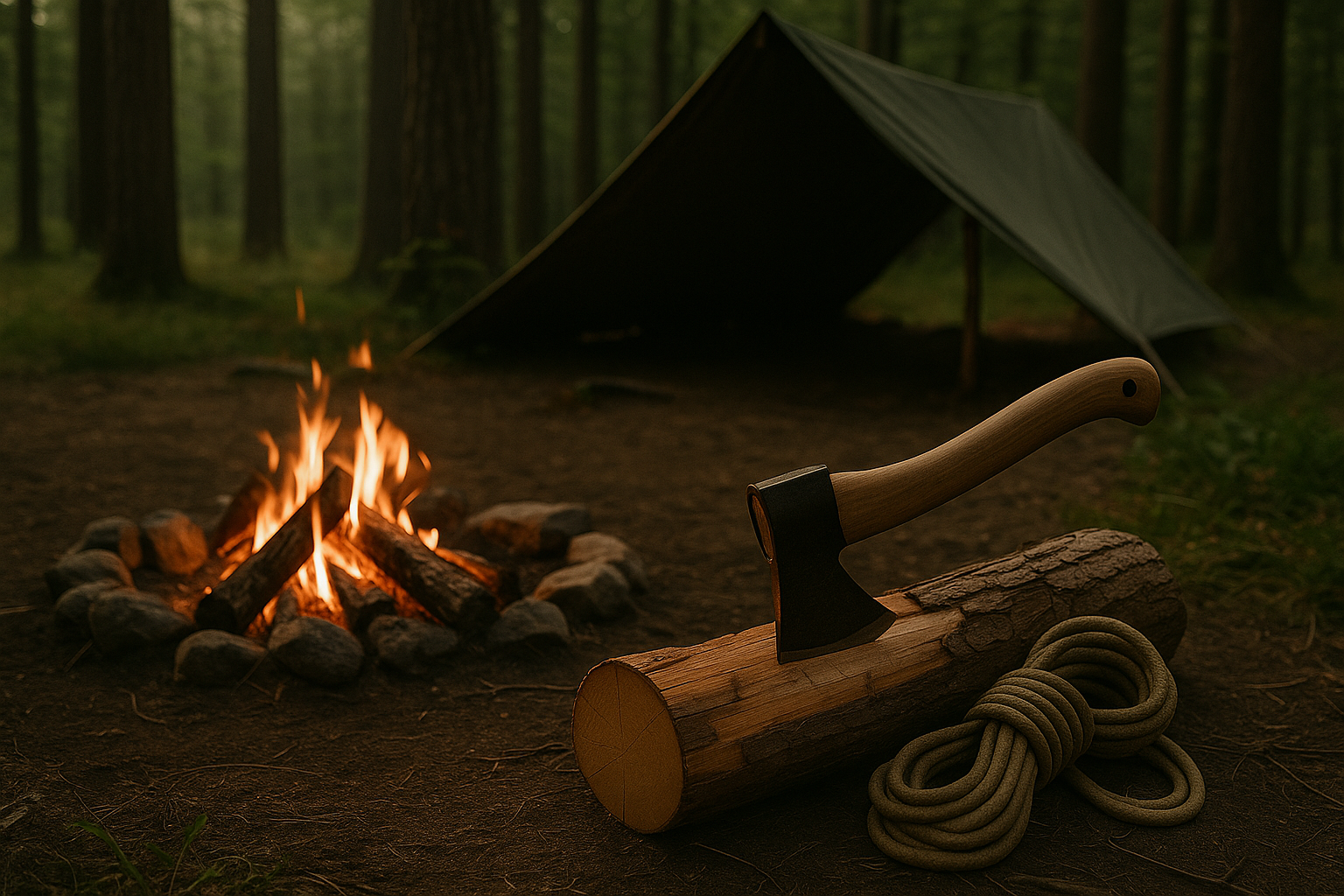
Welcome to TrailForge Gear’s Bushcraft & Survival Tools Guide — your comprehensive resource for essential tools that help you master the wild. Whether you’re carving a shelter, starting a fire, or navigating rugged terrain, the right bushcraft and survival tools are vital for any serious adventurer.
The outdoors can be unpredictable. Having the proper gear not only improves your efficiency and comfort but can also mean the difference between life and death in an emergency.
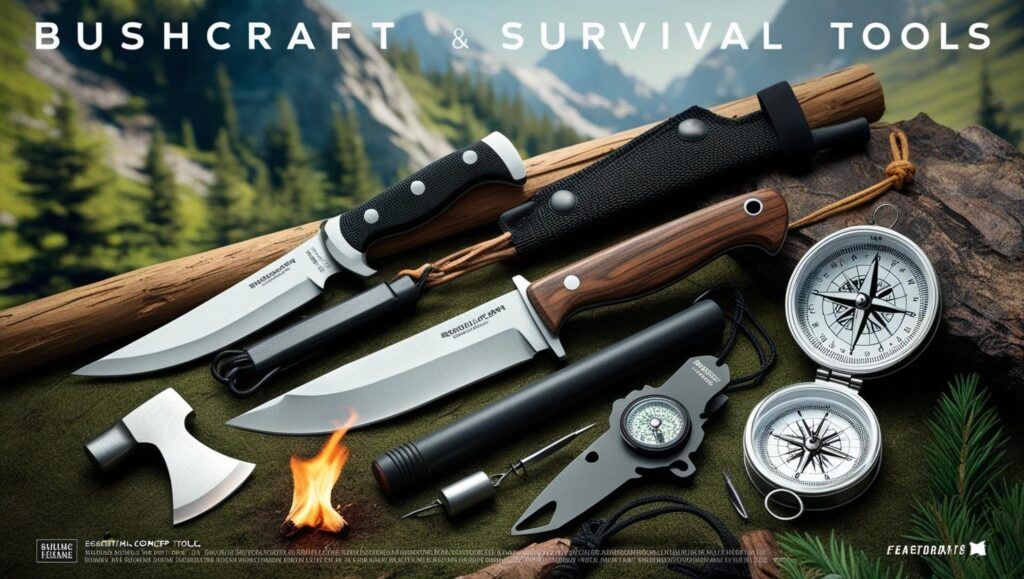
✅ Self-Reliance: Build, repair, and navigate with minimal resources
✅ Safety: Be prepared for unexpected situations
✅ Efficiency: Handle challenges with the right tool for the job
✅ Confidence: Increase your skills and peace of mind on every outing
Essential Bushcraft & Survival Tools
1️⃣ Fixed-Blade Knives
A cornerstone of any survival kit, a fixed-blade knife offers unmatched strength and reliability. Unlike folding knives, these blades don’t have moving parts, making them ideal for rugged tasks like batoning wood, preparing food, skinning game, crafting shelter stakes, and defending yourself if needed. Look for full-tang construction for maximum durability.
2️⃣ Multitools
A multitool is your portable toolbox in the wild. These compact units combine essential instruments like pliers, wire cutters, screwdrivers, mini saws, scissors, can openers, and even small blades. They’re perfect for gear repairs, fishing, cooking, and other tasks where having multiple functions in one tool saves space and weight.
3️⃣ Fire Starters
Fire means warmth, safety, cooked food, and signaling for rescue. Essential fire-starting tools include:
- Ferrocerium rods (aka ferro rods) that spark in any weather
- Waterproof matches for wet environments
- Reliable lighters for quick ignition
You should always carry more than one method to ensure redundancy, Fire is life when temperatures drop.
🔎 Affiliate Disclosure
At TrailForge Gear, our mission is to share honest stories, rugged outdoor insights, and handpicked gear recommendations that support your wilderness adventures and backwoods romance reads. Some of the links you find on our site are affiliate links, meaning we may earn a small commission — at no extra cost to you — if you make a purchase through them.
As an Amazon Associate, we earn from qualifying purchases.
We only recommend gear, books, and tools we personally believe in or use ourselves, and we never let compensation influence our content or reviews. Your trust means everything to us, and every recommendation is made with your outdoor journey in mind.
Thanks for supporting TrailForge and helping us keep the fire going.
🔥 You can shop these essential survival items below 👇
4️⃣ Compact Axes & Hatchets
When it comes to processing firewood, clearing brush, or building shelter, a compact hatchet or axe is a powerful tool that punches above its size. They’re easier to carry than full-sized axes but still strong enough to split logs, chop limbs, and prepare kindling. Many come with belt loops or molle attachments for easy access on the trail..
5️⃣ Cordage (Paracord)
Paracord is one of the most versatile items you can pack. This lightweight but extremely strong rope can be used for shelter building, gear repairs, fishing line (with the inner threads), tourniquets, snares, or even makeshift belts or boot laces. Always carry at least 25 feet in your pack—you’ll use it more than you expect.
6️⃣ Navigation Tools
In a world full of dead batteries and lost GPS signals, traditional navigation tools like compasses and topographic maps are critical for staying on course. A reliable compass helps you orient, backtrack, and avoid getting lost—even in thick forests or foggy conditions. These analog tools don’t fail when technology does.
🧭 You can shop these proven survival tools below 👇
Survival Skill Highlight: Mastering Firecraft — Your Lifeline in the Wild
When you’re cold, wet, and alone, fire can save your life. It’s not just about warmth — it’s about survival. Fire purifies water, cooks food, wards off predators, dries your gear, and acts as a psychological anchor when panic starts to creep in. That’s why Firecraft is one of the most important survival skills to learn and practice.
Why It Matters:
Fire helps you stay warm, signal for rescue, sanitize, and maintain morale. In a life-or-death situation, the ability to make fire under any condition is a core bushcraft skill — and one that can’t be replaced by tech alone.
Fire-Starting Skills Every Survivalist Should Know:
Three No-Fail Methods To Start A Fire (Even Without a Lighter):
- Ferro Rod and Striker – The go-to for modern survivalists. Works when wet, cold, or windy.
- Bow Drill (Primitive Method) – Takes effort, but knowing this ancient technique is a true survival badge of honor.
- Solar Lens – If the sun is out, a lens can focus rays to ignite dry tinder. Great backup on clear days.
Best Natural Tinder Sources (And What To Carry)
- Birch bark (even damp, it peels and burns well)
- Cotton balls soaked in petroleum jelly (pack in a zip bag)
- Dryer lint (excellent spark-catcher)
- Fatwood and dry wood curls made with your knife
Trail-Tested Gear Recommendation:
Complete Emergency Fire Starter Kit – Waterproof, Windproof
A reliable kit is everything. This one includes a ferro rod, waterproof tinder, and a compact striker — tested in wind, snow, and rain.
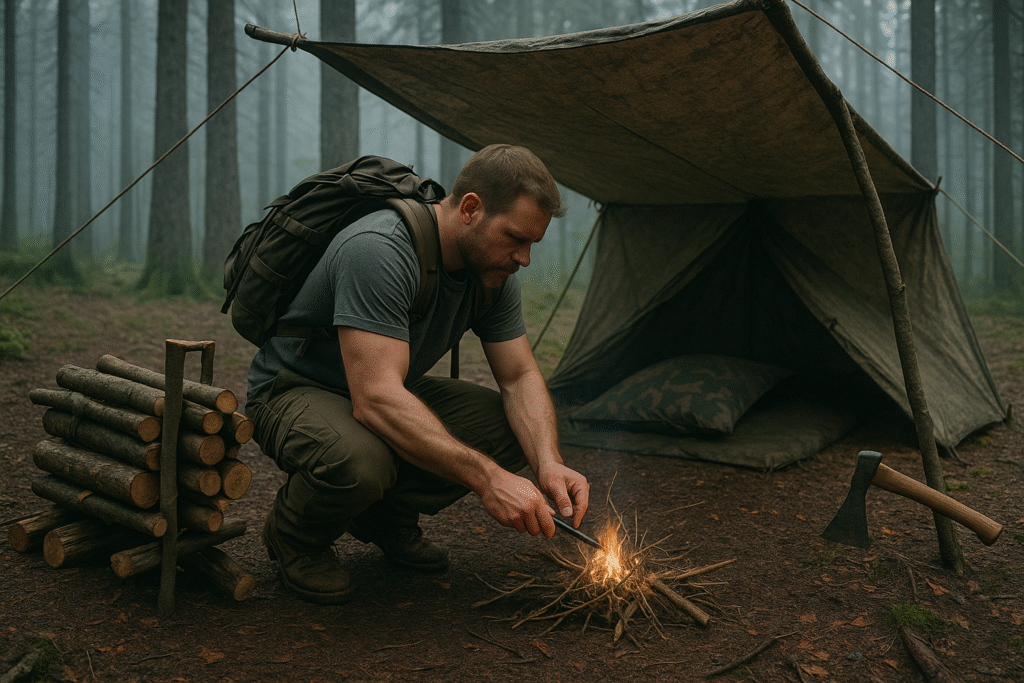
Pro Survival Tip:
Practice one-handed fire starting.
You never know when your other hand could be injured or numb. Skill matters more than gear when conditions get rough. Get familiar with striking, preparing tinder, and building a fire structure — before you need it.
Survival Skill Highlight: Shelter-Building from Natural Materials
When temperatures drop or a storm rolls in, your shelter becomes your sanctuary. Without it, you risk hypothermia, heatstroke, or exposure — even in mild climates. That’s why learning how to build a shelter using what’s around you is one of the core pillars of bushcraft survival.
Why It Matters:
A proper shelter regulates body temperature, protects against wind, rain, snow, sun, and bugs, and helps you rest — which is critical for survival decisions and energy conservation.
Three Go-To Natural Shelters You Can Build:
1. Lean-To Shelter
- Best for windy or rainy conditions
- Build using a long ridge pole between two trees and lean branches against one side
- Add a thick layer of leaves, bark, or pine needles for insulation and rain protection
2. Debris Hut
- Perfect for cold nights or long stays
- Create a small frame like a pup tent, cover it with sticks, and pile on as much debris as possible
- Keeps body heat in; ideal for sleeping
3. Tarp + Nature Hybrid
- Use a tarp or poncho as the base, then reinforce with branches and natural materials
- Lightweight + fast = perfect for bug-out or temporary stops
Materials You Can Use from the Wild:
- Pine boughs
- Deadfall branches
- Large leaves or bark sheets
- Moss or dry grasses for insulation
- Paracord or vines for binding
Trail-Tested Gear Add-On:
TECEUM 5/32″ Paracord Camping Rope
Having quality cordage turns a simple shelter into a secure one. Whether it’s tying a ridge line or anchoring branches in high winds, paracord gives you the strength and flexibility needed in the wild.
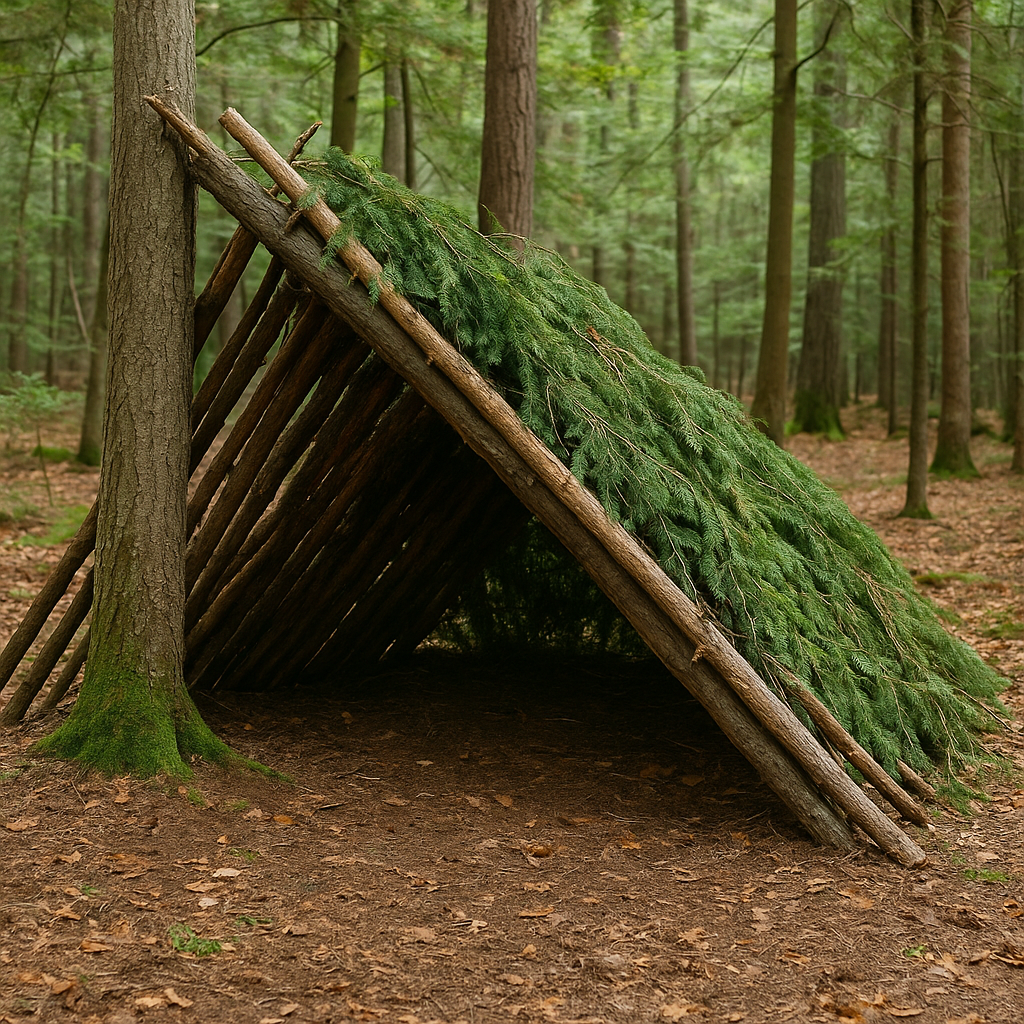
Pro Survival Tip:
Always think in layers.
Start with structure (branches or poles), then insulate (leaves, moss, grass), and finally protect (tarp, bark, or extra coverage). The goal is to stay dry, insulated, and hidden from the elements.
Real-World Benefits from the Trail
Safety
In the wilderness, preparation can be the difference between danger and security. Ultralight survival gear ensures that hikers and backpackers can:
- React quickly to unexpected weather changes or terrain shifts.
- Treat minor injuries with compact, field-ready first aid kits.
- Signal for help using lightweight tools like whistles, mirrors, or compact emergency radios.
- Stay hydrated and healthy with built-in water filtration systems — often lifesaving when natural sources are all you have.
Skill Building
Ultralight adventure gear isn’t just about the tools — it’s about learning how to use them effectively. It empowers you to:
- Navigate with a map and compass instead of relying on tech that might fail.
- Master fire-starting with minimal gear, even in wet or windy conditions.
- Cook, camp, and set up shelter with limited materials, boosting self-reliance and outdoor wisdom.
- Build mental resilience — every smart decision on the trail builds confidence for future trips.
Versatility
Every ounce counts. That’s why TrailForge Gear focuses on tools with multiple functions:
Paracord has dozens of uses: from hanging food to making repairs, to building traps or splints in emergencies.
A compact knife can cut, prep, pry, and even spark a fire.
Cooking pots double as containers, wash basins, and food storage.
Tarp shelters serve as rain cover, emergency blankets, or ground cloths.

Pro Tip:
Practice with your tools before heading into the field. Skill matters just as much as the equipment itself.
Where to Find the Best Bushcraft & Survival Tools
At TrailForge Gear, we rigorously test tools in diverse environments. Visit our TrailForge Gear Reviews section (coming soon) for our top picks.
For stories of survival gear saving the day (or the entire trip), head over to Wildfoot Explores for real-world accounts from seasoned adventurers.
Final Thoughts
Survival is about preparation and adaptability. Investing in quality bushcraft and survival tools empowers you to handle the unexpected with confidence and competence.
Discover our recommended survival tools or read how experienced explorers use them in real-world challenges at Wildfoot Explores.


